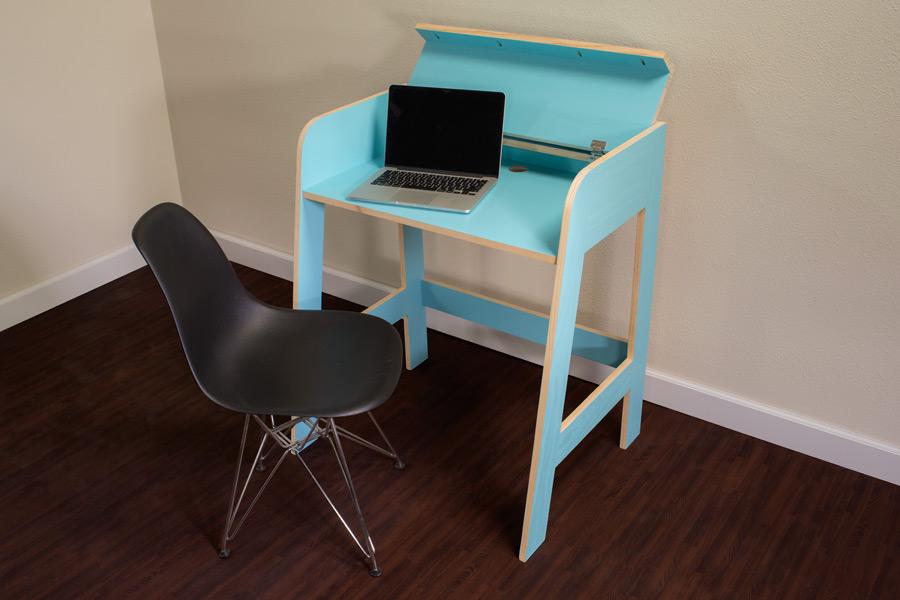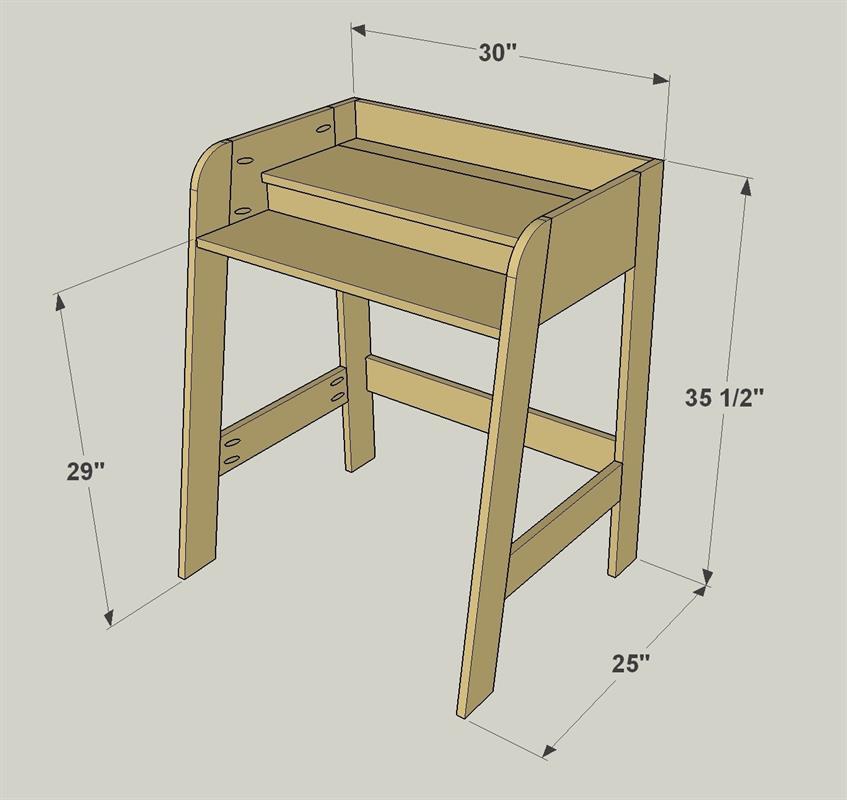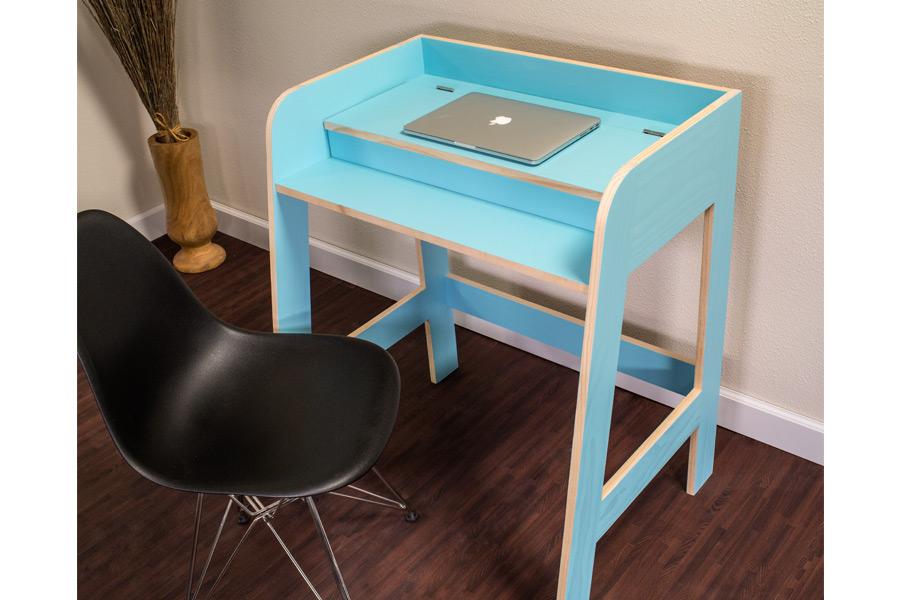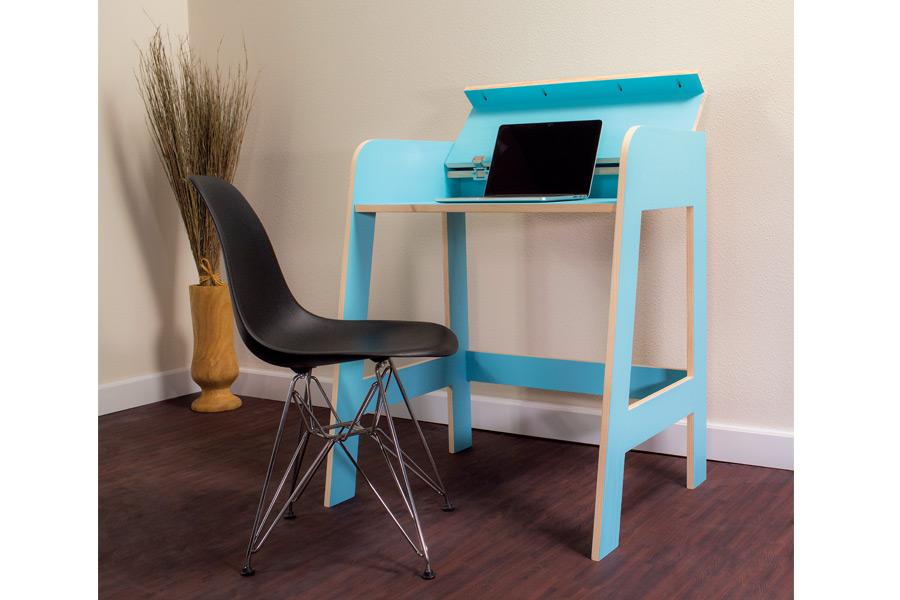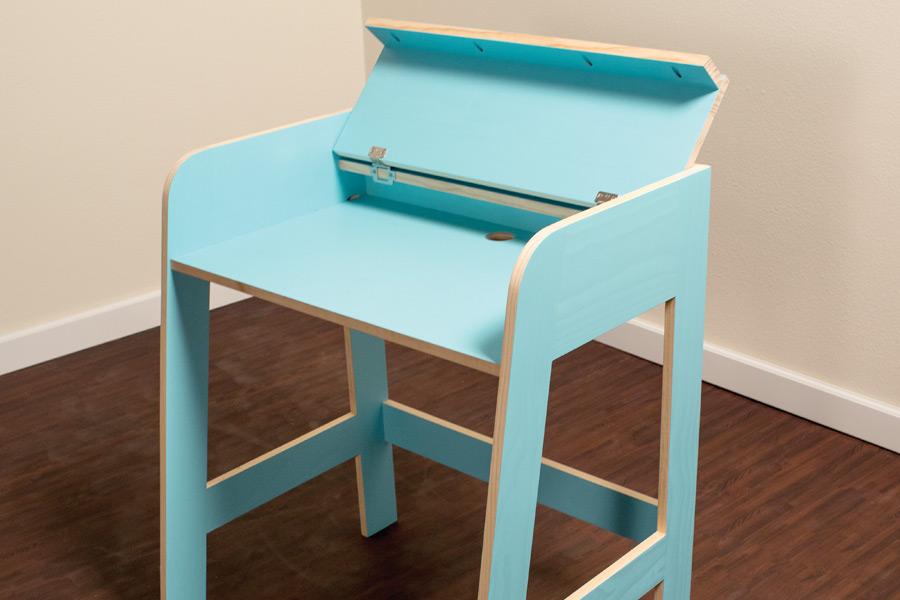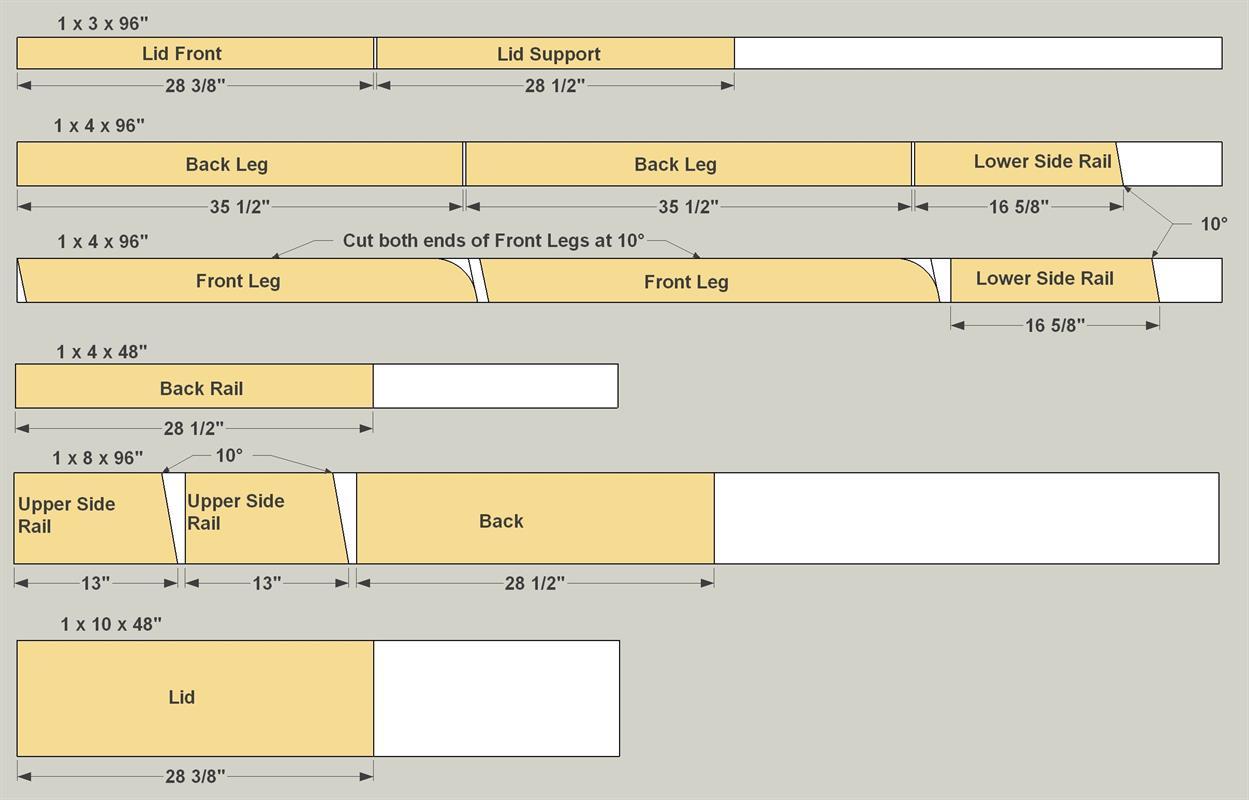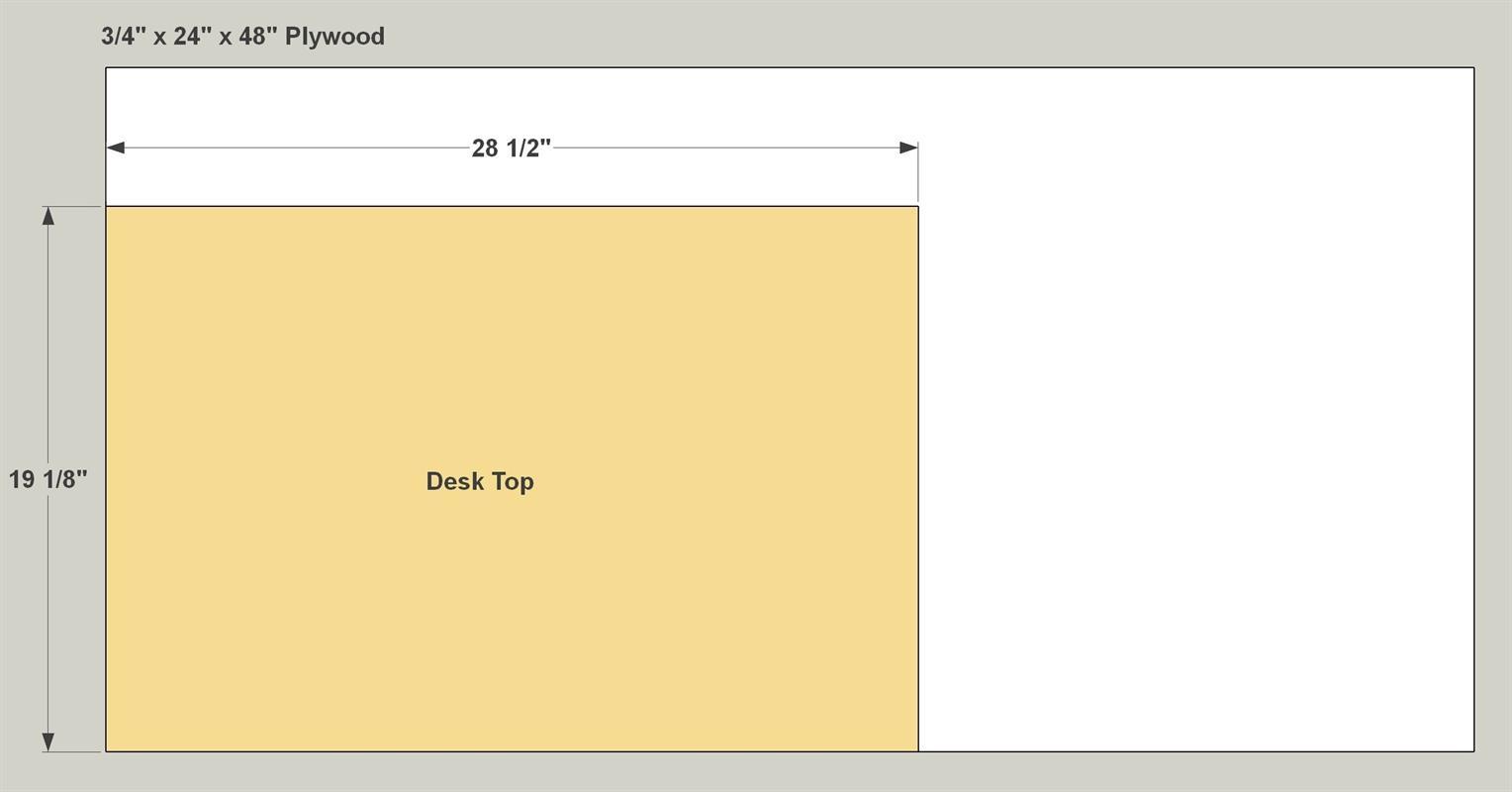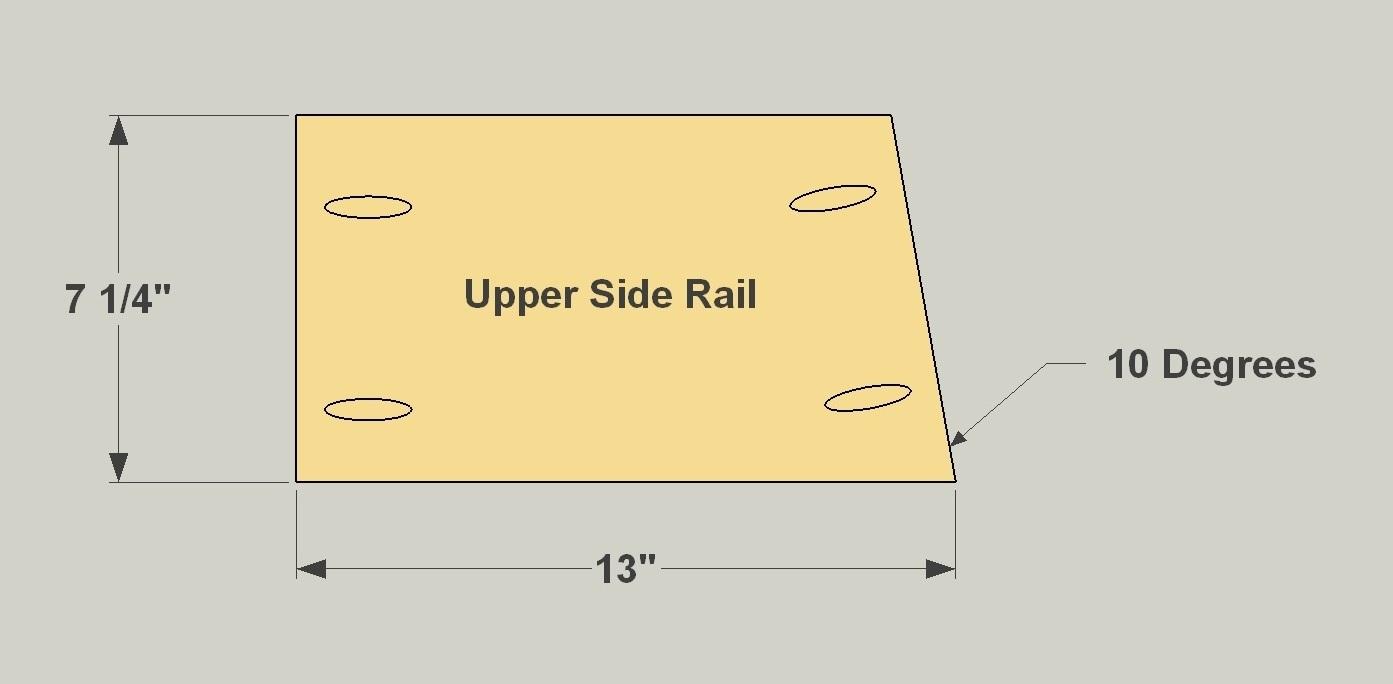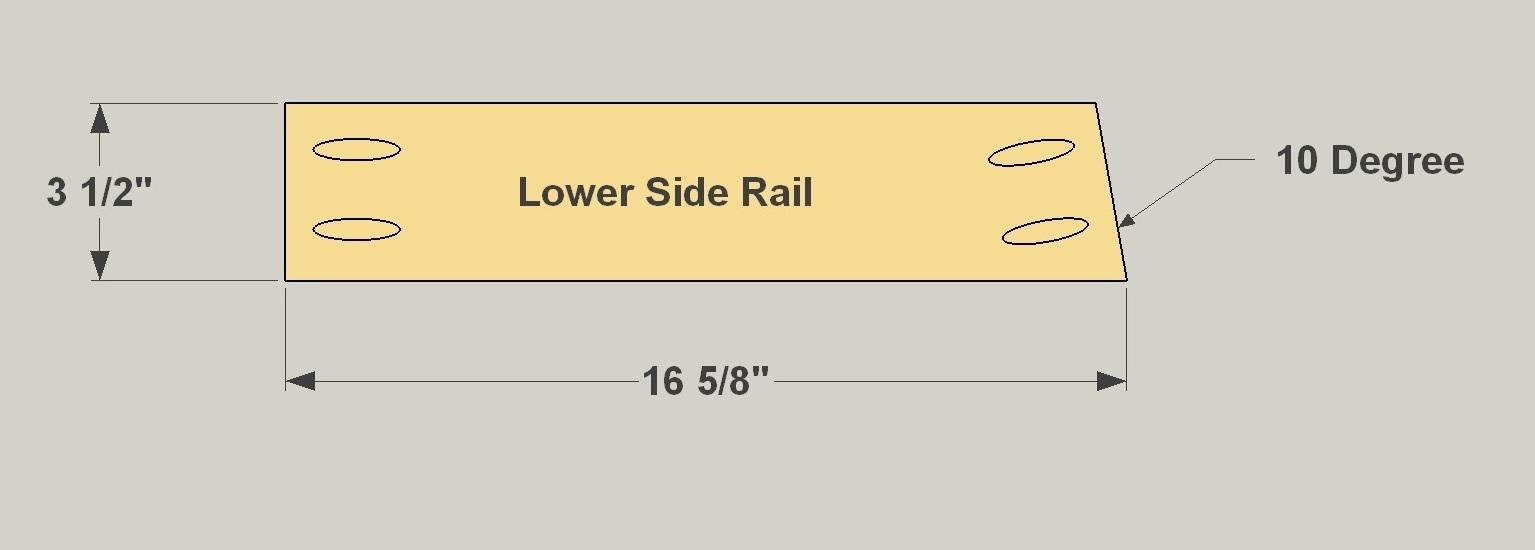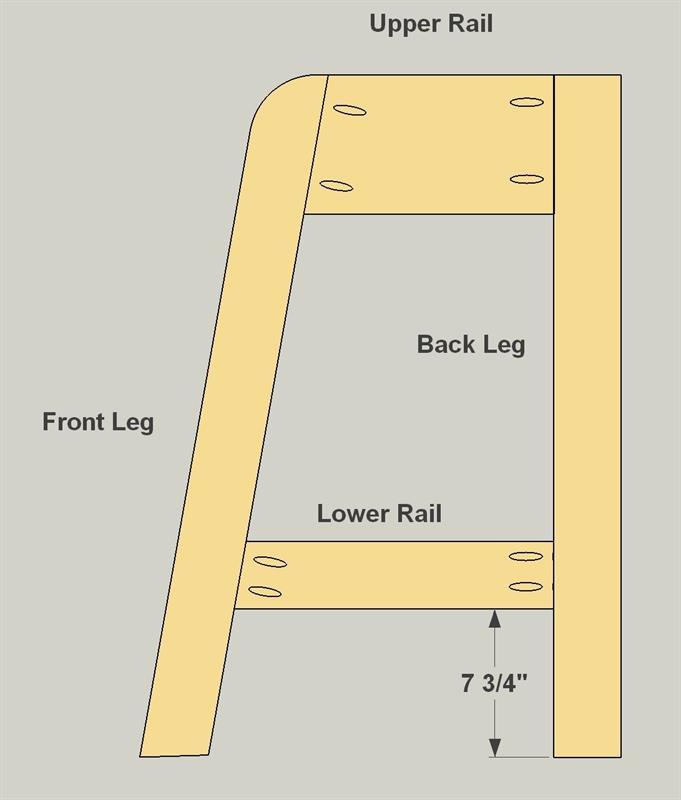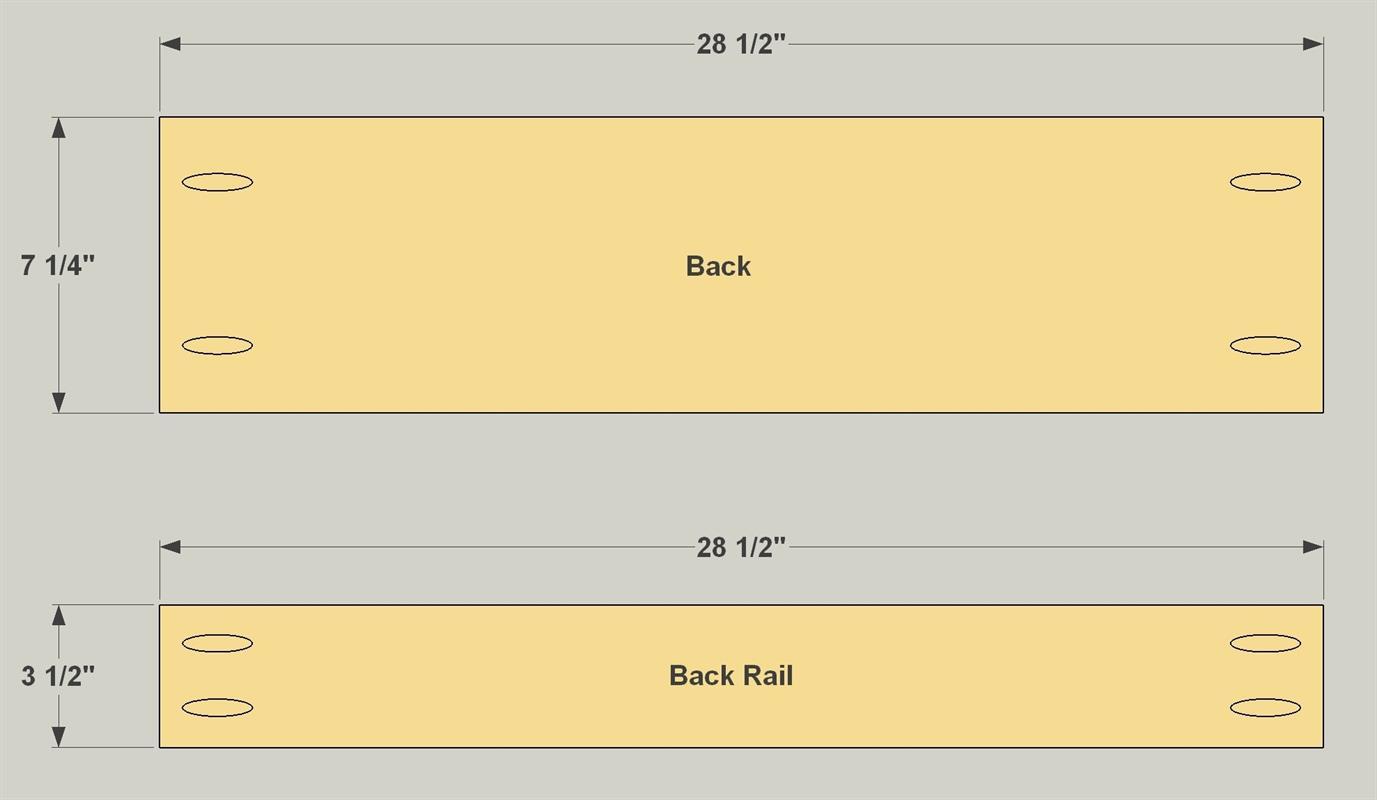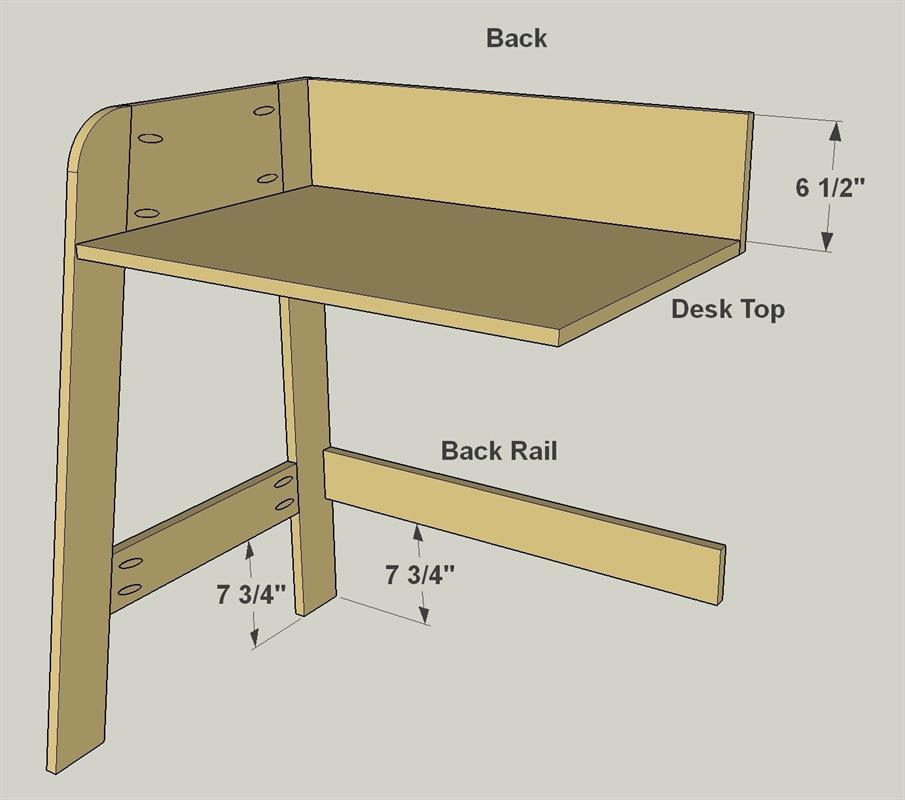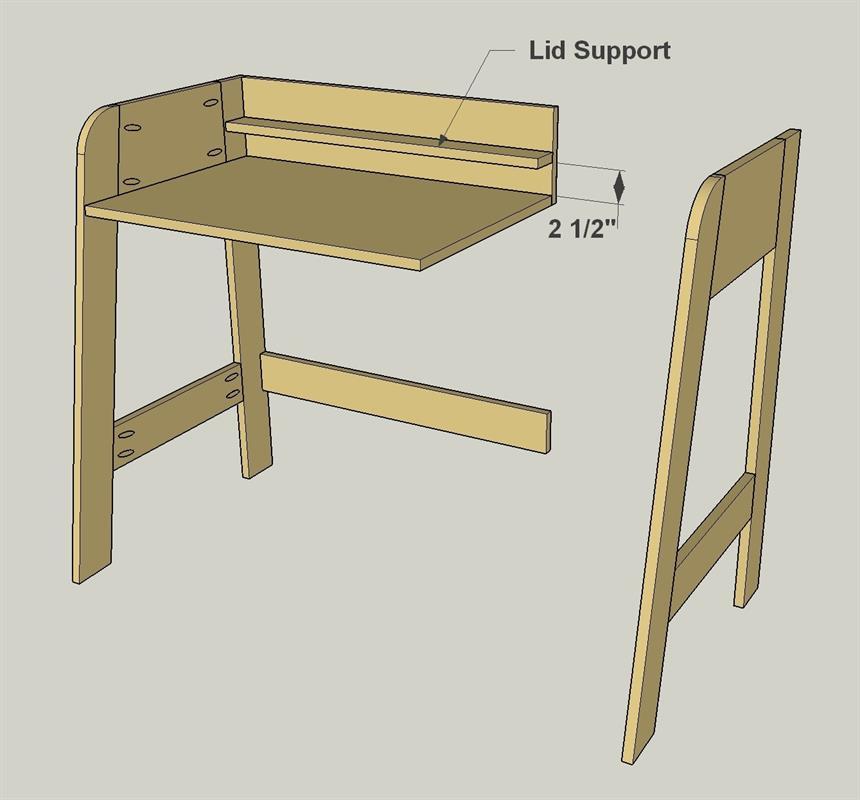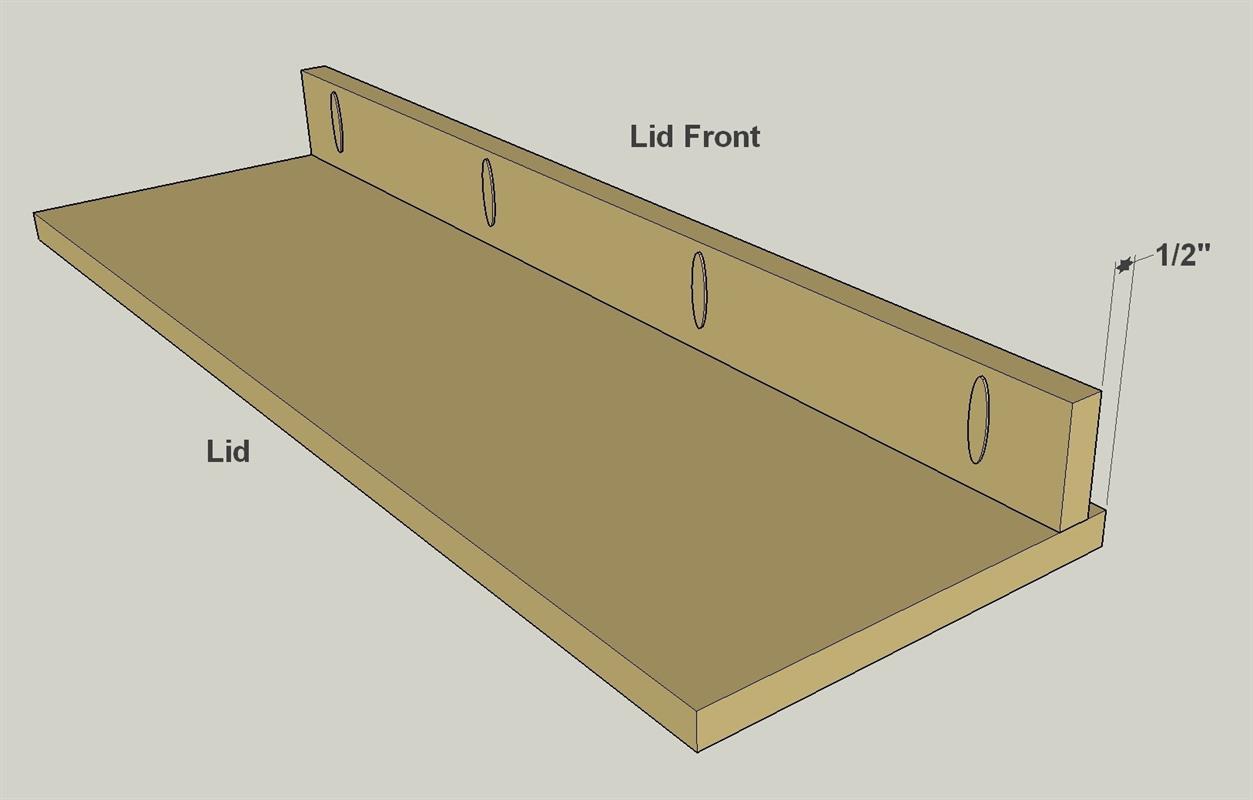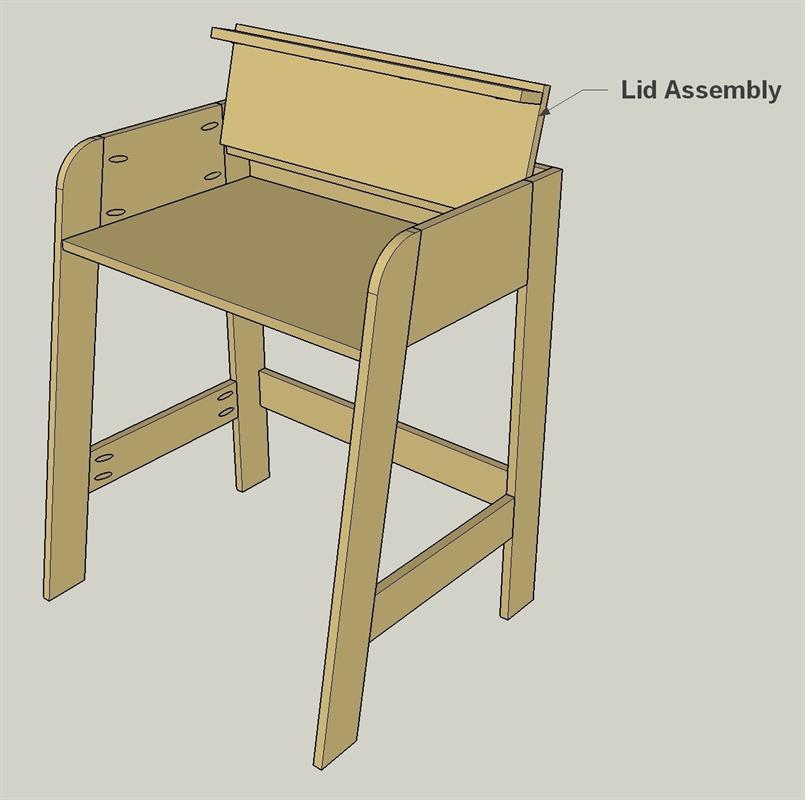Simple Desk with Style
By Kreg ToolThis desk provides a great workspace in a small package. Thanks to the folding lid, you can leave your laptop and work supplies in place on the desk, but cover them up when they’re not in use. In addition to being functional, the desk also offers a unique look that’s surprisingly easy to create.
Directions
-
Cut Legs to Size
Cut two Back Legs to length from a 1x4 board, as shown in the cutting diagram. Then cut two Front Legs to length. Note that both ends of the Front Legs are cut at parallel 10° angles. Then, use a quart can to lay out the radius on the Front Legs, and cut it to shape with a jig saw.
-
Cut a Pair of Upper Rails
Cut two Upper Side Rails from a 1 x 8 board. Not that one end is cut at a 0° angle. Then, with your pocket hole jig set up for 3/4" material, drill pocket holes where shown.
-
Cut a Pair of Lower Rails
Cut two Lower Side Rails from a 1 x 4 board. Not that one end is cut at a 0° angle. Then, with your pocket hole jig set up for 3/4" material, drill pocket holes where shown.
-
Assemble the Sides
Now you can attach the Legs to the Rails using 1 1/4" coarse-thread pocket hole screws, as shown. Glue pocket hole plugs into the holes, and then sand the plugs smooth.
-
Make a Desk Top
Cut a Desk Top to size from a quarter-sheet of 3/4" plywood. Then, with your pocket hole jig set up for 3/4" material, drill pocket holes where shown. Also drill a hole near the back edge for power cords to pass through. Apply iron-on edgebanding to the front edge of the Top, as well.
-
Add a Back and Back Rail
Cut a Back to length from a 1x8 board, and a Back Rail to length from a 1x4 board, as shown in the cutting diagram. Then, with your pocket hole jig set up for 3/4" material, drill pocket holes where shown.
-
Attach the Back and Desk
Attach the Back to the Desk Top using 1 1/4" coarse-thread pocket hole screws, then attach these pieces to one of the side assemblies. Also attach the Back Rail, aligning it with the Lower Side Rail.
-
Make the Lid Parts
Cut a Lid to length from a 1x10 board, as shown in the cutting diagram. Also cut a Lid Front and a Lid Support to length from a 1x3 board. Then drill pocket holes, as shown, with your pocket hole jig set up for 3/4" material.
-
Bring in Support and a Side
Now you can attach the Lid Support using 1 1/4" coarse-thread pocket hole screws. Then bring in the other side assembly and secure it.
-
Assemble the Lid
Attach the Lid Front to the Lid using 1 1/4" coarse-thread pocket hole screws. Note that the Lid front is set back 1/2" from the edge of the Lid.
-
Install the Lid, then Paint
To complete construction of your desk, install a pair of hinges on the Lid, and connect them to the Lid Support. Then you can paint, stain, or finish the desk (see this tip below), and then put it to work.
Paint with Natural Edges
The paint finish on this desk might look complicated, but it’s easy. The secret is to use foam rollers, and go lightly near the edges. Don’t load the roller with a lot of paint, and it won’t seep over the edges. You’ll have to apply several light coats, but the result is worth it. If any paint gets on the edges, just let it dry, and then sand it away. To protect he edges, wipe on a coat of natural oil finish after the paint dries.



